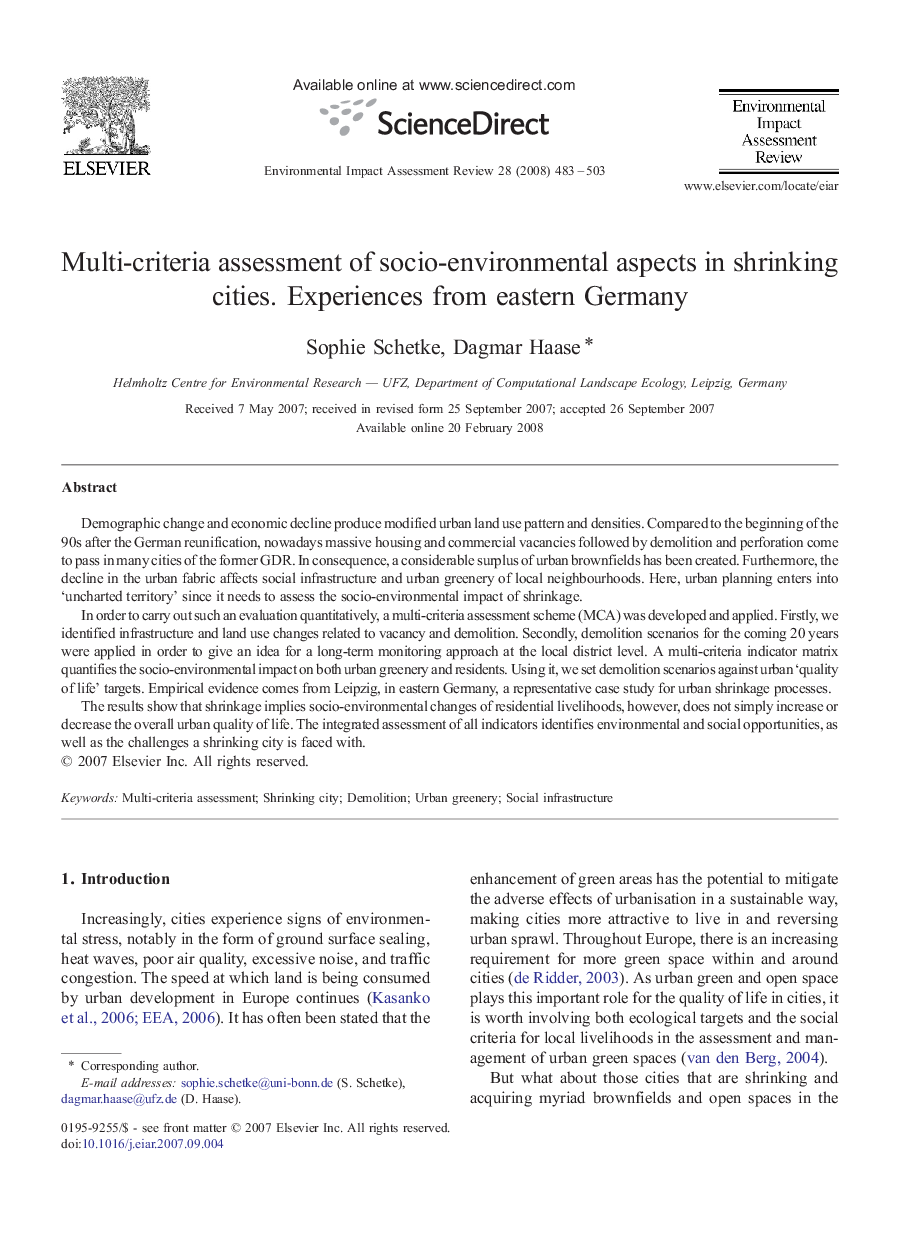| Article ID | Journal | Published Year | Pages | File Type |
|---|---|---|---|---|
| 1053330 | Environmental Impact Assessment Review | 2008 | 21 Pages |
Demographic change and economic decline produce modified urban land use pattern and densities. Compared to the beginning of the 90s after the German reunification, nowadays massive housing and commercial vacancies followed by demolition and perforation come to pass in many cities of the former GDR. In consequence, a considerable surplus of urban brownfields has been created. Furthermore, the decline in the urban fabric affects social infrastructure and urban greenery of local neighbourhoods. Here, urban planning enters into ‘uncharted territory’ since it needs to assess the socio-environmental impact of shrinkage.In order to carry out such an evaluation quantitatively, a multi-criteria assessment scheme (MCA) was developed and applied. Firstly, we identified infrastructure and land use changes related to vacancy and demolition. Secondly, demolition scenarios for the coming 20 years were applied in order to give an idea for a long-term monitoring approach at the local district level. A multi-criteria indicator matrix quantifies the socio-environmental impact on both urban greenery and residents. Using it, we set demolition scenarios against urban ‘quality of life’ targets. Empirical evidence comes from Leipzig, in eastern Germany, a representative case study for urban shrinkage processes.The results show that shrinkage implies socio-environmental changes of residential livelihoods, however, does not simply increase or decrease the overall urban quality of life. The integrated assessment of all indicators identifies environmental and social opportunities, as well as the challenges a shrinking city is faced with.
